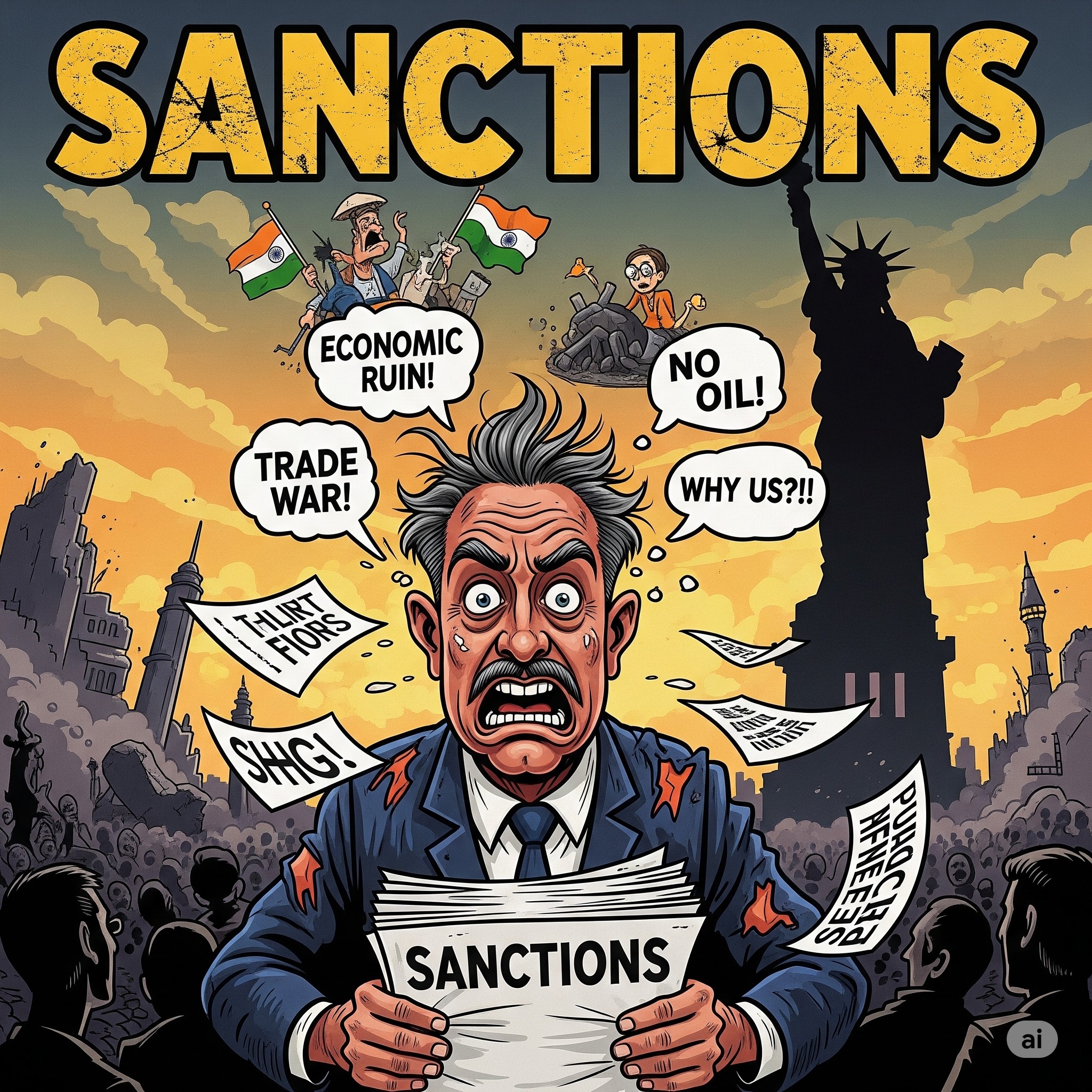The latest tariff clash between Washington and New Delhi exposes a dilemma India can no longer evade. For more than two years, India has been the single largest beneficiary of discounted Russian oil, cushioning inflationary shocks while sustaining rapid industrial growth. But in doing so, India has tethered itself more tightly to Moscow at the very moment the West seeks to isolate the Kremlin.
This is India’s Catch-22. On one hand, it cannot walk away from Russian energy without harming its economy. On the other, its dependence places it in direct collision with the United States, its most important strategic partner in the Indo-Pacific.
Dependency masked as autonomy
India presents its Russia policy as “strategic autonomy.” In practice, nearly 38–40% of India’s oil imports now come from Russia, up from less than 2% before February 2022. Refiners have built margins on Moscow’s discounts, while the state has relied on this supply to contain inflation. If India were forced to switch back to Middle Eastern or U.S. crude, fuel costs would rise sharply, with immediate consequences for industry, consumer prices, and political stability.
The strain would be most visible in agriculture. Diesel powers over 60% of India’s farm fuel use, including irrigation, tractors, and crop transport. Any spike would raise input costs, squeeze profit margins, and exacerbate food inflation. States such as Bihar, Uttar Pradesh, and Madhya Pradesh, where poverty rates are among the highest—could see millions pushed back below the poverty line.
Washington’s growing impatience
For years, Washington tolerated India’s equivocation, largely because of China. India’s role in the Quad made it indispensable. But the Ukraine war has changed the calculus. Indian imports have strengthened Moscow’s oil revenues, while its exports of critical goods raise concerns of sanctions evasion.
The U.S. has responded with tariffs ranging from 25% to 50% on Indian goods. This is more than an economic measure—it is a political rebuke. A partner cannot credibly be treated as reliable while simultaneously providing Russia with a critical financial lifeline.
AI disruption: another layer of vulnerability
India’s troubles are compounded by the rapid U.S. adoption of artificial intelligence. Bangalore, the “Silicon Valley of India,” accounts for over $245 billion in IT exports and employs more than 4.5 million people. Yet generative AI tools now perform coding, customer service, and back-office functions that were the backbone of India’s outsourcing industry. Goldman Sachs estimates that AI could automate up to 26% of programming work and 37% of finance and accounting tasks, directly threatening Bangalore’s labour-dependent model.
The human cost is stark: unemployment could surge among India’s IT workforce, affecting urban consumption, real estate, and regional economies. Simultaneously, rural populations already vulnerable to energy price shocks face double exposure—economic disruption both at home and from global trade losses.
Bangladesh: poised to gain
U.S. punitive measures on India could create strategic and economic openings for Bangladesh. Companies previously sourcing from India may redirect orders to Bangladesh’s growing manufacturing and tech sectors. The textile and garment industry, IT services, and emerging tech start-ups could benefit from both trade diversion and outsourcing shifts caused by AI-driven U.S. reshoring.
Bangladesh could also leverage its position to negotiate favourable regional trade agreements and attract investment that might have gone to India. Reduced competitive pressure from Indian exporters and a potential slowdown in industrial activity could give Dhaka a stronger hand in regional energy, infrastructure, and logistics projects. In short, India’s challenges could translate into tangible gains for Bangladesh’s economy and strategic influence in the Bay of Bengal and beyond.
A narrowing corridor
India’s posture of being both Washington’s democratic partner and Moscow’s economic backer is increasingly unsustainable. Its doctrine of non-alignment looks less like independence and more like opportunism. The human costs are already visible: farmers face rising input costs, IT workers face automation-driven job losses, and millions of vulnerable citizens risk falling deeper into poverty.
Analytical conclusion
India has long believed it could navigate contradictions and extract advantage from all sides. But the war in Ukraine, combined with U.S. AI advances and punitive trade measures, has narrowed that space. New Delhi can no longer convincingly claim to be both a partner of the West and the lifeline of Russia.
The coming years will determine whether India can manage this Catch-22, which involves balancing energy security, technological relevance, and domestic stability—without sacrificing the livelihoods of farmers, IT professionals, and the urban middle class. Meanwhile, Bangladesh stands to gain strategically and economically from India’s vulnerabilities, highlighting how regional fortunes can shift dramatically when global power dynamics collide with national policy choices.

Ayesha Farid is a regional security specialist focusing on South Asia, with over a decade of experience analysing inter-state tensions, cross-border insurgency, and regional power dynamics. She has worked with leading policy think tanks and academic institutions, offering nuanced insights into the complex security challenges shaping the subcontinent. Ayesha’s expertise spans military doctrines, border disputes, and regional cooperation frameworks, making her a vital contributor to BDMilitary’s coverage of South Asian strategic affairs. She leads the Geopolitics & Diplomacy section at BDMilitary. Ayesha holds a dual master’s degree — a Master in International Relations from the IE School of Politics, Economics & Global Affairs, Spain, and a Master of Public Policy from the Munk School of Global Affairs, University of Toronto, Canada — combining deep academic insight with practical policy expertise.



